We’ve all had that sinking feeling after hitting the “send” button on an email to your boss and immediately seeing a grammar mistake.
Or posting a long and heart-warming greeting to your best friend on Instagram, and second-guessing yourself whether it’s “affect” or “effect.”
It’s quite the universal feeling. After all, good grammar keeps your thoughts on track and delivers them the way you intend to.
Bad grammar, on the other hand, distracts your audience from what you actually wanted to say. That’s why writers work with proofreaders and editors.
The good news is that improving your grammar doesn’t require memorizing dusty textbooks or sitting through boring lectures.
It’s a skill you can develop with the right strategies and tools.
This guide will help you identify your weak spots and master advanced grammar concepts.
You’ll learn practical techniques that actually work, plus how to use modern AI tools like ChatGPT and Undetectable AI to level up your writing game.
Key Takeaways
- You can’t fix grammar issues you don’t notice. Learn to spot common mistakes.
- Reading quality writing and writing regularly yourself are the two most effective ways to improve.
- ChatGPT can check your grammar, but tools like Undetectable AI’s Grammar Checker go further by making corrections sound naturally human.
- Perfect grammar means nothing if your writing is confusing. Always prioritize being understood.
- If English isn’t your first language, you’ll benefit from tools that help with natural phrasing, not just technical correctness.
Signs You Need to Improve Your Grammar
How do you know if your grammar needs work? Sometimes it’s obvious. Other times, not so much.
- People misunderstand your writing. If you constantly have to clarify what you meant in emails or messages, grammar might be the culprit. Misplaced modifiers, unclear pronoun references, or incorrect punctuation can completely change what you mean.
- You avoid writing certain things. Do you shy away from writing professional emails or important documents? That’s often a sign you’re not confident in your grammar skills. You might use simpler sentences than you’d like, just to play it safe.
- Your writing sounds choppy or awkward. Good grammar keeps your writing flowing, while bad grammar creates speed bumps. If your sentences feel disconnected or your paragraphs don’t flow smoothly, grammar issues might be breaking up your natural voice.
- You second-guess yourself constantly. Spending 10 minutes deciding between “who” and “whom” is exhausting. If you’re always doubting your grammar choices, you need a stronger foundation.
- Professional feedback mentions grammar. When teachers, editors, or colleagues point out grammar problems, listen. They’re seeing patterns you might miss.
- Your spell-checker is always angry. Those red and blue squiggles are trying to tell you something. If your documents look like a Christmas tree of corrections, it’s time to address the underlying issues.
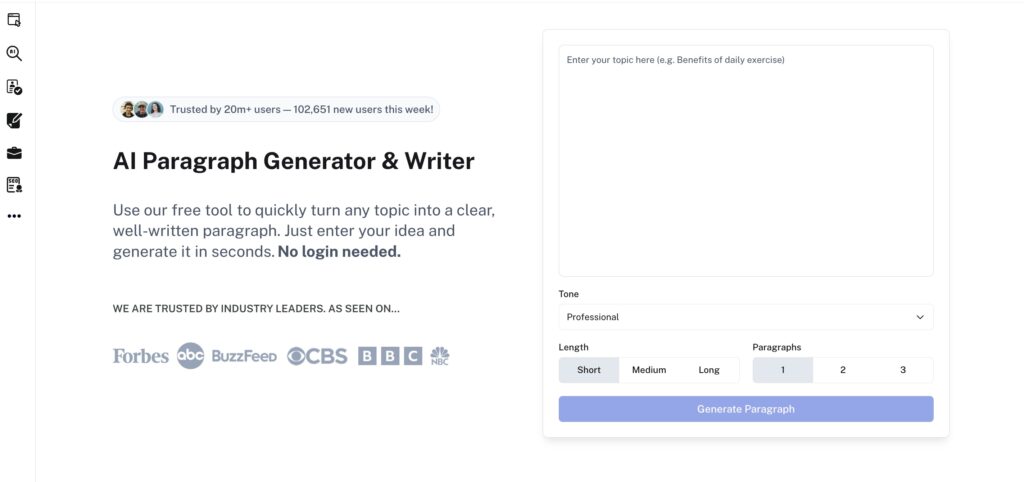
Here’s the thing about unclear or grammatically messy text: it’s fixable.
When your writing feels muddled, tools like Undetectable AI’s AI Paragraph Generator can rewrite your text in grammatically correct form while keeping your intended meaning.
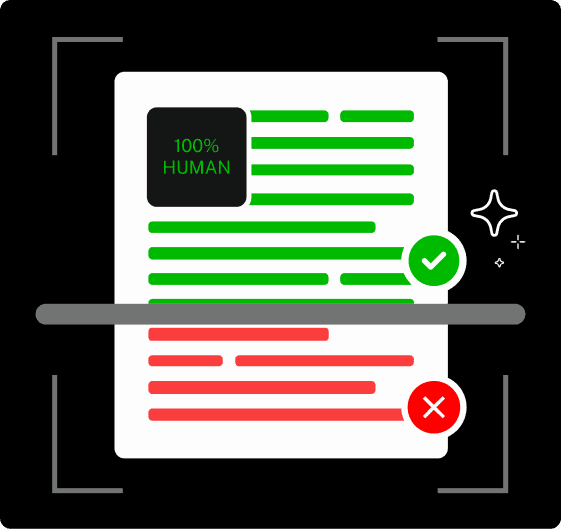
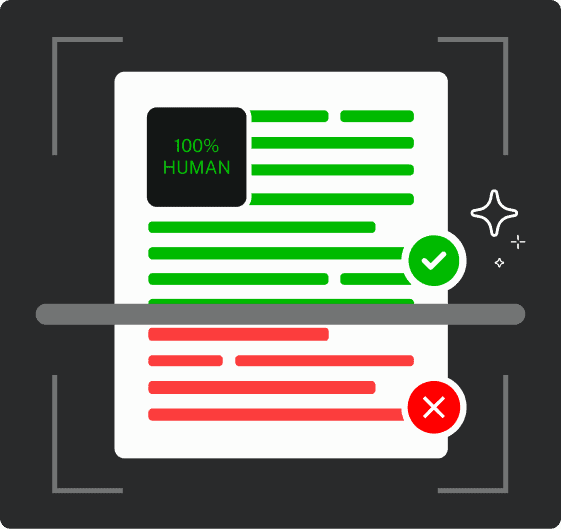
Never Worry About AI Detecting Your Texts Again. Undetectable AI Can Help You:
- Make your AI assisted writing appear human-like.
- Bypass all major AI detection tools with just one click.
- Use AI safely and confidently in school and work.
It’s especially helpful when you know what you want to say but can’t quite figure out how to structure it properly.
How to Improve Grammar Step by Step
Improving your grammar requires a systematic approach. Here’s how to do it without getting overwhelmed.
Step 1: Identify your specific weak spots. Don’t try to fix everything at once.
Start by figuring out what you struggle with most. Subject-verb agreement? Comma splices? Run-on sentences? Keep a log of mistakes you make repeatedly.
These patterns will tell you where to focus your energy.
Step 2: Learn one concept at a time. Pick a single grammar rule and master it before moving on. Spend a week focusing only on comma usage, for example.
Then move to semicolons. This targeted approach works better than trying to absorb everything simultaneously.
Step 3: Read actively and analytically. Reading improves grammar, but only if you pay attention. When you encounter a well-written sentence, pause. Notice how it’s constructed.
Why did the author use a comma there? How did they avoid repetition? Active reading helps you internalize grammar.
Step 4: Write every single day. There’s no substitute for practice. Practice makes your writing better. Journal entries, Reddit comments, Medium posts, emails to yourself.
The more you write, the more grammar rules become automatic instead of something you have to consciously think about.
Step 5: Get feedback on your writing. You can’t see all your own mistakes. Share your writing with others, or use AI tools to catch errors.
ChatGPT can spot grammar issues, but knowing there’s a mistake isn’t always enough. You need to understand why it’s wrong and how to fix it naturally.
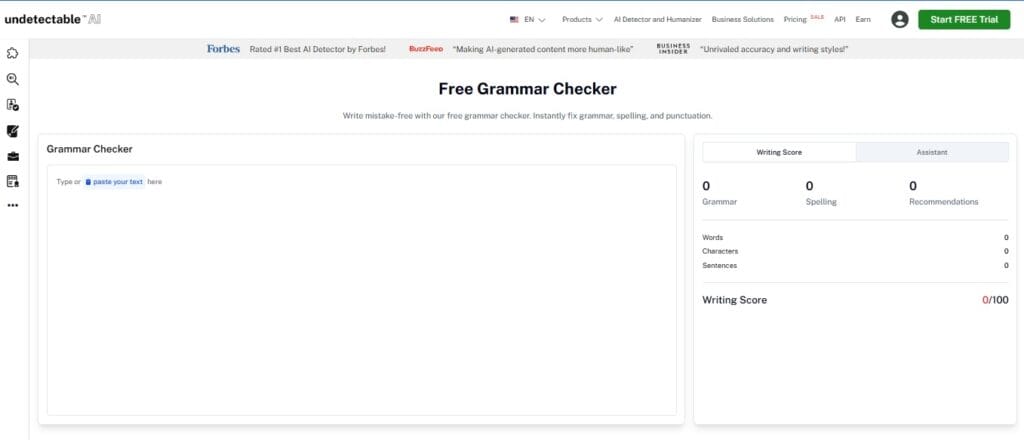
This is where Undetectable AI’s Grammar Checker becomes valuable. It doesn’t just identify grammar problems.
It humanizes the corrections, showing you how to fix issues while maintaining natural flow. The corrections don’t sound robotic or overly formal.
They sound like something a real person would actually write.
Step 6: Review and revise systematically. Never trust your first draft. Set your writing aside for a bit, then come back with fresh eyes. Read it out loud too.
Awkward grammar usually reveals itself when you hear it.
Step 7: Study grammar in context, not isolation. Grammar rules make more sense when you see them in real sentences.
Don’t just memorize that a comma goes before a coordinating conjunction in a compound sentence.
Find examples of this in articles you enjoy reading. Context cements understanding.
Step 8: Create your own reference sheet. As you learn rules, write them down in your own words. Include examples that mean something to you.
This personalized cheat sheet will become your go-to resource when you’re unsure.
Grammar Tips for Writing Improvement
Beyond following the rules, certain strategies can accelerate your grammar improvement, whether you’re a beginner or an advanced writer.
- Read your writing backward. Start with the last sentence and work toward the first. This tricks your brain into seeing errors you’d otherwise skip over. You’re not caught up in the meaning, so grammar mistakes become more visible.
- Use the search function to find your weak spots. If you know you overuse certain words or mess up specific constructions, use Find (Ctrl+F) to locate them in your document. Search for “however” if you know you misuse it. Search for “their/there/they’re” if those trip you up.
- Pay attention to your comma instincts. Most native English speakers have decent comma intuition. If you feel like a sentence needs a comma somewhere, it probably does. Trust that instinct, then verify it against the rules.
- Learn the difference between spoken and written grammar. Casual speech breaks grammar rules constantly. That’s fine for texting friends. But formal writing requires different standards. Understanding when to switch between these modes is important.
- Stop using words you don’t fully understand. A thesaurus isn’t always your friend. Using “utilize” instead of “use” doesn’t make you sound smarter if you use it incorrectly.
- Study sentence combining. Take two simple sentences and combine them in multiple ways. This teaches you how different grammatical structures create different effects.
- Notice what sounds wrong. Your ear for language is better than you think. If something sounds off when you read it aloud, investigate why. That discomfort often signals a grammar issue.
- Learn from your mistakes without shame. Everyone makes grammar mistakes. The difference between good writers and struggling writers isn’t that good writers are perfect. It’s that they learn from their errors and don’t repeat them endlessly.
Common Grammar Mistakes and How to Fix Them

Let’s tackle the grammar mistakes that trip up almost everyone, regardless of skill level.
- Comma splices: This is when you join two independent clauses with a comma.
Wrong: “I love grammar, it’s so useful.”
Right: “I love grammar. It’s so useful.”
In this case, use a semicolon or add a conjunction.
- Its vs. It’s: “It’s” means “it is” or “it has.” “Its” shows possession. Think of it like “his” or “hers,” which also don’t have apostrophes. If you can’t substitute “it is,” use “its.”
- Subject-verb agreement: The subject and verb must agree in number. “The team are winning” feels wrong because “team” is singular. “The team is winning” works. Collective nouns trip people up here.
- Dangling modifiers: “Walking to the store, the rain started pouring from the sky.” This implies that the rain was walking to the store. Fix: “Walking to the store, I got caught in the pouring rain.”
- Affect vs. Effect: “Affect” is usually a verb (to influence). “Effect” is usually a noun (a result). The weather affects my mood. The effect is that I feel gloomy. There are exceptions, but this rule applies 95% of the time.
- Less vs. Fewer: “Fewer” is for countable things. “Less” is for amounts. Fewer cookies, less sugar. If you can count it, use fewer.
- Who vs. Whom: “Who” is the subject. “Whom” is the object. If you can substitute “he,” use “who.” If you need “him,” use “whom.” “Whom” is dying in casual English. When in doubt, restructure the sentence.
- Run-on sentences: Stringing too many clauses together without proper punctuation creates confusion, so break them up. Shorter is often clearer.
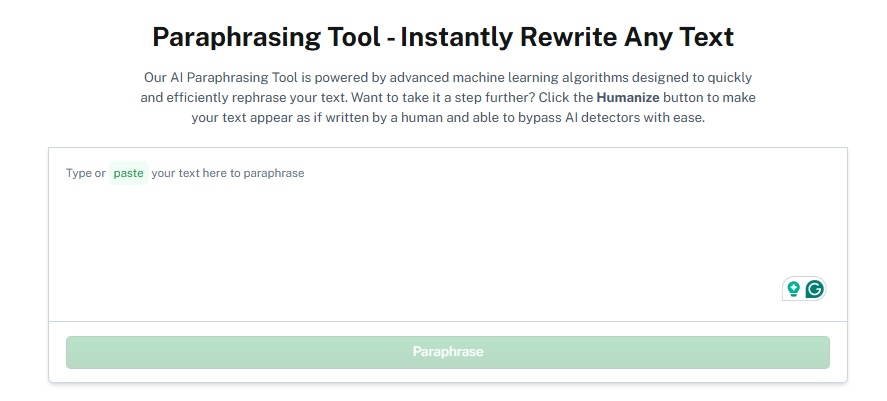
When you’re dealing with multiple grammar issues in a piece of writing, fixing them one by one gets tedious. Sometimes your text needs a complete refresh.
Undetectable AI’s AI Paraphraser handles this elegantly. It fixes grammar mistakes while keeping your core meaning intact.
The result reads naturally because it doesn’t just correct errors mechanically. It rewrites for flow and clarity.
How to Improve Grammar for ESL/EFL Learners
Learning English when it’s not your native language presents unique challenges.
The rules often seem arbitrary. Native speakers break them constantly. Nothing makes sense.
Here’s what actually helps:
- Immerse yourself in natural English. Watch shows without subtitles. Listen to podcasts. Read blogs and books. Your brain needs massive exposure to natural English patterns. Grammar rules make more sense when you’ve already internalized how things should sound.
- Focus on high-frequency errors first. ESL learners often struggle with articles (a, an, the), prepositions (in, on, at), and verb tenses. Master these before worrying about obscure rules you’ll rarely use.
- Practice thinking in English. When you constantly translate from your native language, you import grammar structures that don’t work in English. Try to think directly in English, even if it’s simple thoughts at first.
- Learn phrase chunks, not just individual words. Instead of learning “depend” as a standalone word, learn “depend on.” English is full of these collocations, and knowing them prevents grammar mistakes.
- Find a language exchange partner. Talking with native speakers forces you to use grammar in real time. You’ll make mistakes, but you’ll also get immediate feedback on what sounds natural.
- Study grammar explicitly, but don’t let it paralyze you. Yes, learn the rules. But don’t let perfectionism stop you from communicating. Making mistakes is part of the process.
Use technology designed for your needs. Standard grammar checkers often miss the specific issues ESL learners face.
They flag errors but don’t explain why something sounds unnatural to a native speaker.
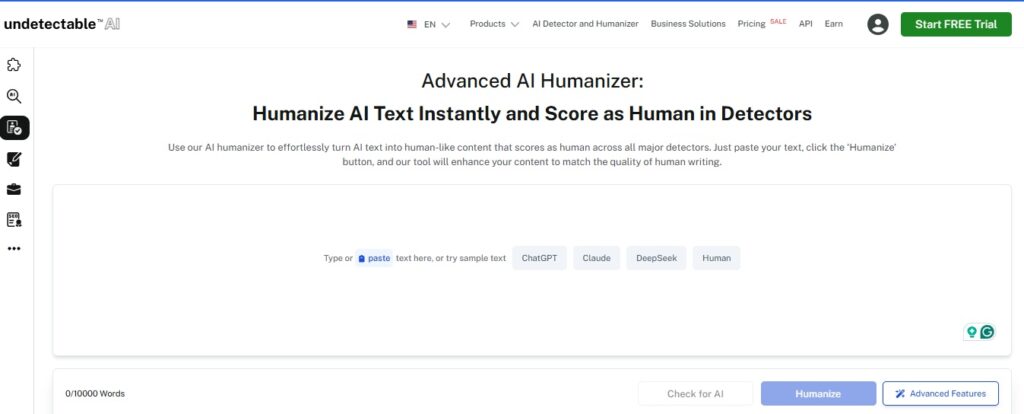
Undetectable AI’s AI Humanizer is essential for ESL learners.
When you correct your grammar, you need the results to sound authentically human, not like a translation or like someone learning English.
The AI Humanizer ensures your corrected sentences flow naturally. It bridges the gap between technically correct English and English that actually sounds native.
The tool catches subtle unnaturalness that standard grammar checkers miss, such as awkward phrasing, unidiomatic expressions, or constructions that are grammatically correct but that no native speaker would actually use.
Use the AI Checker to review AI-assisted writing for grammar consistency and fluency.
It evaluates whether the text sounds naturally written or overly machine-structured, helping you identify subtle phrasing issues and uneven sentence flow before you publish or submit your work.
Another helpful tool for learners is Undetectable AI’s AI Paragraph Generator and Writer.

It allows you to rewrite and polish practice paragraphs while focusing on grammar, sentence flow, and structure.
You can input your own text or prompts to see how correct grammar looks in full context, making it easier to internalize natural phrasing and improve your writing accuracy over time.
Test our AI Detector and Humanizer with the widget below!
Because Spellcheck Can’t Save Your Soul
Improving your grammar isn’t about achieving perfection. It’s about gaining confidence and clarity in your communication.
When your grammar is solid, every email, document, and post you write becomes more effective.
If you’re spotting grammar mistakes after you hit send, you’re already developing awareness.
If you’re reading this article, you’re taking action.
Use the steps in this guide systematically. Focus on one weak area at a time. Practice daily, even if just for fifteen minutes.
Read actively, paying attention to how skilled writers construct their sentences.
And leverage the tools available to you. ChatGPT can check your grammar when you ask “how to use ChatGPT to check grammar” and paste in your text.
But tools like Undetectable AI’s suite of features take it further. The Grammar Checker helps you understand corrections.
The AI Paraphraser fixes multiple issues while maintaining your voice. The AI Humanizer ensures everything sounds natural, not robotic.
Grammar is a skill, not a talent. And skills can be learned.
